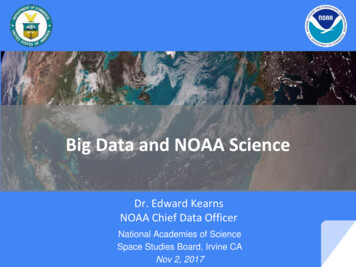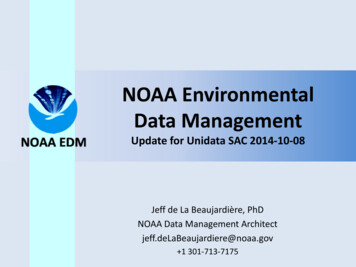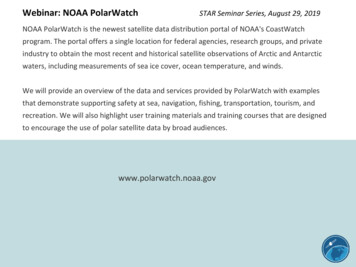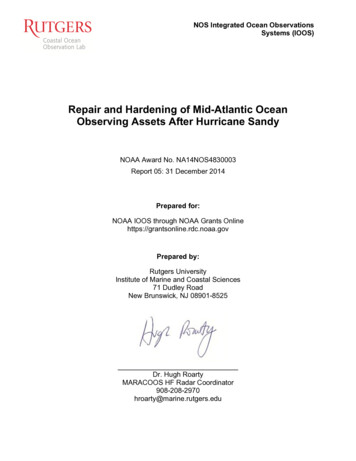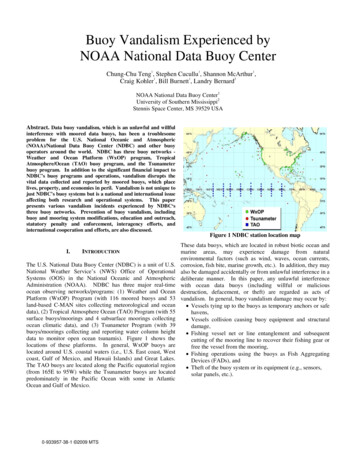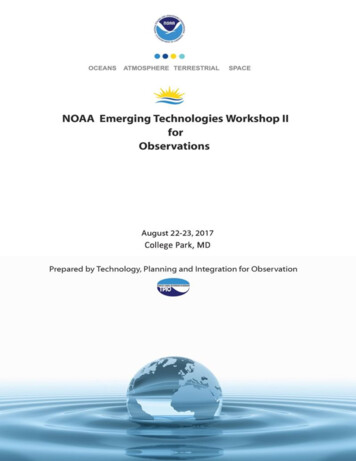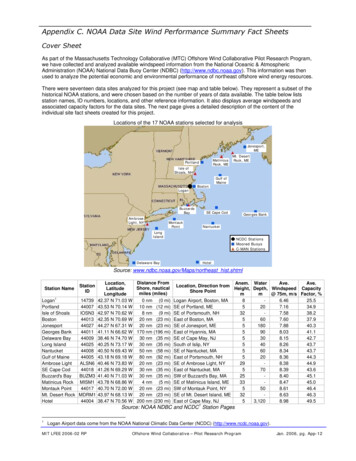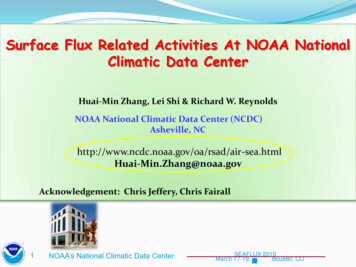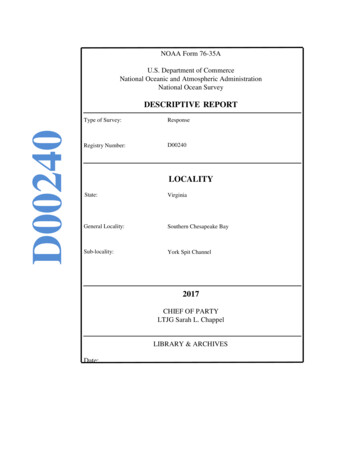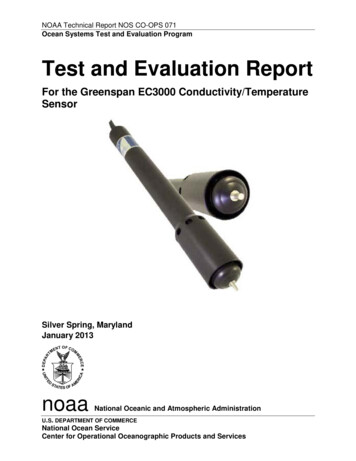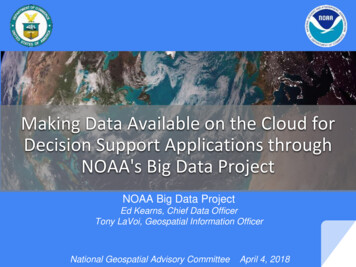
Transcription
Making Data Available on the Cloud forDecision Support Applications throughNOAA's Big Data ProjectNOAA Big Data ProjectEd Kearns, Chief Data OfficerTony LaVoi, Geospatial Information OfficerNational Geospatial Advisory CommitteeApril 4, 2018
NOAA’s Geospatial Programs are DiverseGeospatial technologies provide theframework to collect, store, analyze,and disseminate ‘NOAA’sEnvironmental Intelligence’Geodetic ControlAuthoritativeGeoDataNautical ChartsShorelineCoastal Topography/BathymetryMarine and Coastal Protected AreasFisheries Catch and HabitatWeather and ClimateSatellite and Aircraft Imagery
NOAA has "Big Data" Volume: 30 PB Velocity: real-time to historical Variety:SatellitesWeather radarsBuoy networksTide gaugesShipsAircraftHuman observersAnimal telemetryNumerical models2018-03-20NOAA data are unique, valuable,and irreplaceable, but most userswant answers and not just ��–––3
Why? Proportionally Increasing Costswith Data Volume & DemandNOAA/NCEI’s Environmental Data Archive2016 Total: 28.6 PetabytesVolume (Petabytes)DEMANDBUDGETS (optimistic)Due to increasein satellite andmodel dataSlide courtesy of NESDIS/NCEICOSTS
Big Data ProjectBasics Experiment with Industry via Cooperative Research andDevelopment Agreements 5 separate, identical agreements – extending to Apr 2019 Industry provides access to NOAA’s open data to all users Data remain open, are not to be sold Collaborators monetize services based on data Uses open data to combine 3 powerful resources:1. NOAA’s science and subject matter expertise2. Industry’s data storage and cloud expertise3. Industry’s user-focused tools and processing
NOAA Big Data ProjectHow to best provide cloud access to NOAA data?One-way transfer out of federalsystems. Only a trusted userinside security boundaryDistributing a single copy of datacan support all users.6
Industry Builds What isNeeded to Support its UsersUsesInformation ConsumersDecisionSupportToolsand 3rd PartiesCloud PlatformsNOAA Data and Expertise7
Summary The Big Data Project is working with its CRADACollaborators to publish NOAA data to their platforms. The Collaborators are providing services to enable datause, including decision support applications. Through available stats are limited, the BDP has seenincreases in data usage from 2 to 100 times. NOAA has seen a decrease load on its servers andnetworks to support data access services
Big Data ProjectCollaborators’ Offerings35 NOAA datasets are now available AWS https://aws.amazon.com/noaa-big-data/ Google Cloud Platform https://cloud.google.com/bigquery/public-data/ https://explorer.earthengine.google.com/#index IBM https://noaa-crada.mybluemix.net/ Microsoft No public services to date Open Commons Consortium http://edc.occ-data.org/
AABigDatahttp://www.noaa.gov/big-data-project
NOAA has "Big Data" Volume: 30 PB Velocity: real-time to historical Variety: -Satellites -Weather radars -Buoy networks -Tide gauges -Ships -Aircraft -Human observers -Animal telemetry -Numerical models NOAA data are unique, valuable, and irreplaceable, but most users want answers and not just data
